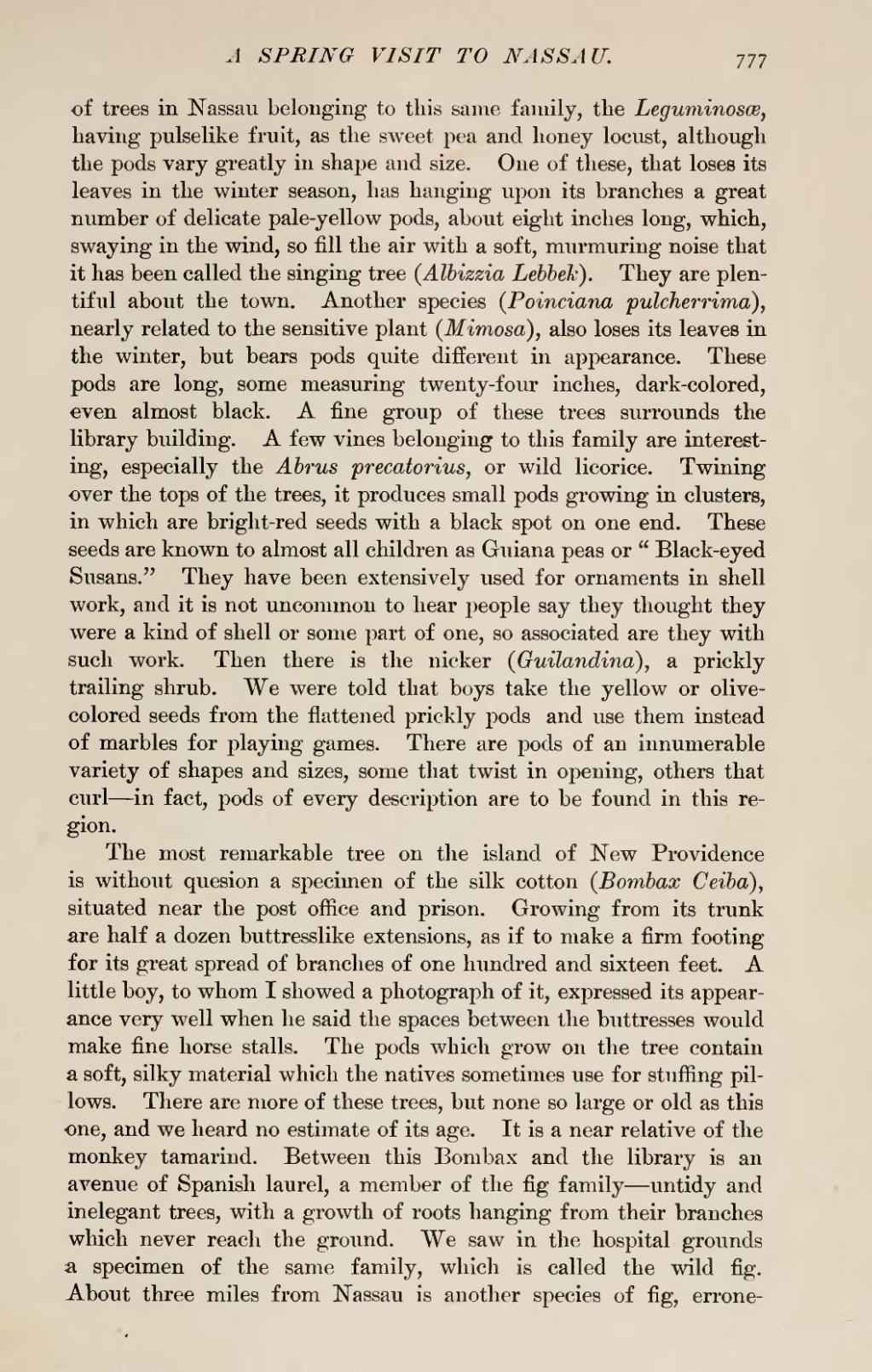of trees in Nassau belonging to this same family, the Leguminosœ, having pulselike fruit, as the sweet pea and honey locust, although the pods vary greatly in shape and size. One of these, that loses its leaves in the winter season, has hanging upon its branches a great number of delicate pale-yellow pods, about eight inches long, which, swaying in the wind, so fill the air with a soft, murmuring noise that it has been called the singing tree (Albizzia Lebbek). They are plentiful about the town. Another species (Poinciana pulcherrima), nearly related to the sensitive plant (Mimosa), also loses its leaves in the winter, but bears pods quite different in appearance. These pods are long, some measuring twenty-four inches, dark-colored, even almost black. A fine group of these trees surrounds the library building. A few vines belonging to this family are interesting, especially the Abrus precatorius, or wild licorice. Twining over the tops of the trees, it produces small pods growing in clusters, in which are bright-red seeds with a black spot on one end. These seeds are known to almost all children as Guiana peas or "Black-eyed Susans." They have been extensively used for ornaments in shell work, and it is not uncommon to hear people say they thought they were a kind of shell or some part of one, so associated are they with such work. Then there is the nicker (Guilandina), a prickly trailing shrub. We were told that boys take the yellow or olive-colored seeds from the flattened prickly pods and use them instead of marbles for playing games. There are pods of an innumerable variety of shapes and sizes, some that twist in opening, others that curl—in fact, pods of every description are to be found in this region.
The most remarkable tree on the island of New Providence is without quesion a specimen of the silk cotton (Bombax Ceiba), situated near the post office and prison. Growing from its trunk are half a dozen buttresslike extensions, as if to make a firm footing for its great spread of branches of one hundred and sixteen feet. A little boy, to whom I showed a photograph of it, expressed its appearance very well when he said the spaces between the buttresses would make fine horse stalls. The pods which grow on the tree contain a soft, silky material which the natives sometimes use for stuffing pillows. There are more of these trees, but none so large or old as this one, and we heard no estimate of its age. It is a near relative of the monkey tamarind. Between this Bombax and the library is an avenue of Spanish laurel, a member of the fig family—untidy and inelegant trees, with a growth of roots hanging from their branches which never reach the ground. We saw in the hospital grounds a specimen of the same family, which is called the wild fig. About three miles from Nassau is another species of fig, errone-

